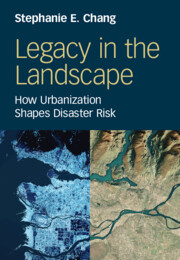5 - Cities and Earthquakes
Published online by Cambridge University Press: 11 November 2025
Summary
This chapter focuses on how urban development relates to earthquake risk. It draws connections between earthquakes and floods, then introduces key technical concepts (e.g., magnitude v. intensity, liquefaction, structural response to shaking). It presents the urban development and disaster histories of Kobe (Japan; including the 1995 earthquake) and Christchurch (New Zealand; including the 2010–2011 Canterbury earthquake sequence), assessing and comparing them using the Urban Risk Dynamics framework. Findings resonate with themes from the flood chapters. Urbanization often involves modifying lands (e.g., draining wetlands, expanding waterfronts, constructing islands), which are susceptible to ground failure in earthquakes. While newer structures are less prone to damage because of technological and building code advances, many older buildings are concentrated in neighborhoods that are hotspots of physical and social vulnerability. Postdisaster reconstruction and recovery accelerate prior trends. Catastrophic events trigger learning and instigate diversification in risk reduction strategies. Retreat from hazard lands is possible, as exemplified in Christchurch’s residential red zone.
Keywords
Information
- Type
- Chapter
- Information
- Legacy in the LandscapeHow Urbanization Shapes Disaster Risk, pp. 109 - 157Publisher: Cambridge University PressPrint publication year: 2025
